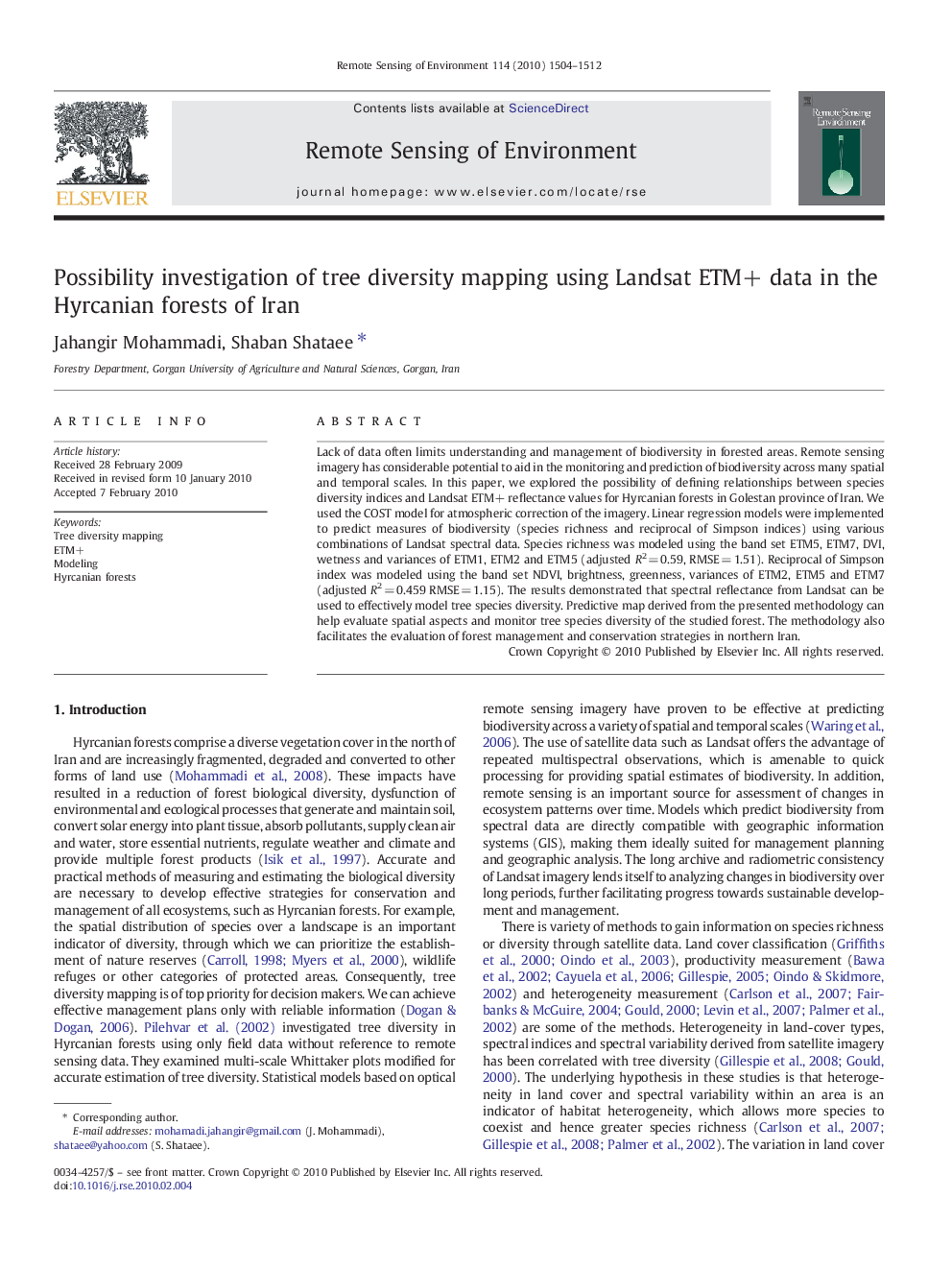| Article ID | Journal | Published Year | Pages | File Type |
|---|---|---|---|---|
| 4459736 | Remote Sensing of Environment | 2010 | 9 Pages |
Lack of data often limits understanding and management of biodiversity in forested areas. Remote sensing imagery has considerable potential to aid in the monitoring and prediction of biodiversity across many spatial and temporal scales. In this paper, we explored the possibility of defining relationships between species diversity indices and Landsat ETM+ reflectance values for Hyrcanian forests in Golestan province of Iran. We used the COST model for atmospheric correction of the imagery. Linear regression models were implemented to predict measures of biodiversity (species richness and reciprocal of Simpson indices) using various combinations of Landsat spectral data. Species richness was modeled using the band set ETM5, ETM7, DVI, wetness and variances of ETM1, ETM2 and ETM5 (adjusted R2 = 0.59, RMSE = 1.51). Reciprocal of Simpson index was modeled using the band set NDVI, brightness, greenness, variances of ETM2, ETM5 and ETM7 (adjusted R2 = 0.459 RMSE = 1.15). The results demonstrated that spectral reflectance from Landsat can be used to effectively model tree species diversity. Predictive map derived from the presented methodology can help evaluate spatial aspects and monitor tree species diversity of the studied forest. The methodology also facilitates the evaluation of forest management and conservation strategies in northern Iran.
